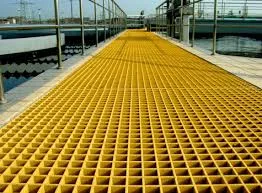
-
 Afrikaans
Afrikaans -
 Albanian
Albanian -
 Amharic
Amharic -
 Arabic
Arabic -
 Armenian
Armenian -
 Azerbaijani
Azerbaijani -
 Basque
Basque -
 Belarusian
Belarusian -
 Bengali
Bengali -
 Bosnian
Bosnian -
 Bulgarian
Bulgarian -
 Catalan
Catalan -
 Cebuano
Cebuano -
 China
China -
 China (Taiwan)
China (Taiwan) -
 Corsican
Corsican -
 Croatian
Croatian -
 Czech
Czech -
 Danish
Danish -
 Dutch
Dutch -
 English
English -
 Esperanto
Esperanto -
 Estonian
Estonian -
 Finnish
Finnish -
 French
French -
 Frisian
Frisian -
 Galician
Galician -
 Georgian
Georgian -
 German
German -
 Greek
Greek -
 Gujarati
Gujarati -
 Haitian Creole
Haitian Creole -
 hausa
hausa -
 hawaiian
hawaiian -
 Hebrew
Hebrew -
 Hindi
Hindi -
 Miao
Miao -
 Hungarian
Hungarian -
 Icelandic
Icelandic -
 igbo
igbo -
 Indonesian
Indonesian -
 irish
irish -
 Italian
Italian -
 Japanese
Japanese -
 Javanese
Javanese -
 Kannada
Kannada -
 kazakh
kazakh -
 Khmer
Khmer -
 Rwandese
Rwandese -
 Korean
Korean -
 Kurdish
Kurdish -
 Kyrgyz
Kyrgyz -
 Lao
Lao -
 Latin
Latin -
 Latvian
Latvian -
 Lithuanian
Lithuanian -
 Luxembourgish
Luxembourgish -
 Macedonian
Macedonian -
 Malgashi
Malgashi -
 Malay
Malay -
 Malayalam
Malayalam -
 Maltese
Maltese -
 Maori
Maori -
 Marathi
Marathi -
 Mongolian
Mongolian -
 Myanmar
Myanmar -
 Nepali
Nepali -
 Norwegian
Norwegian -
 Norwegian
Norwegian -
 Occitan
Occitan -
 Pashto
Pashto -
 Persian
Persian -
 Polish
Polish -
 Portuguese
Portuguese -
 Punjabi
Punjabi -
 Romanian
Romanian -
 Russian
Russian -
 Samoan
Samoan -
 Scottish Gaelic
Scottish Gaelic -
 Serbian
Serbian -
 Sesotho
Sesotho -
 Shona
Shona -
 Sindhi
Sindhi -
 Sinhala
Sinhala -
 Slovak
Slovak -
 Slovenian
Slovenian -
 Somali
Somali -
 Spanish
Spanish -
 Sundanese
Sundanese -
 Swahili
Swahili -
 Swedish
Swedish -
 Tagalog
Tagalog -
 Tajik
Tajik -
 Tamil
Tamil -
 Tatar
Tatar -
 Telugu
Telugu -
 Thai
Thai -
 Turkish
Turkish -
 Turkmen
Turkmen -
 Ukrainian
Ukrainian -
 Urdu
Urdu -
 Uighur
Uighur -
 Uzbek
Uzbek -
 Vietnamese
Vietnamese -
 Welsh
Welsh -
 Bantu
Bantu -
 Yiddish
Yiddish -
 Yoruba
Yoruba -
 Zulu
Zulu
grp tank
The Rise of GRP Tanks A Sustainable Solution for Water Storage
In the face of increasing water scarcity and the need for sustainable development, the demand for innovative water storage solutions has never been more pressing. One such solution gaining traction is the GRP (Glass Reinforced Plastic) tank. Renowned for its robust properties and environmental benefits, GRP tanks are becoming a popular choice across various sectors, including agriculture, construction, and municipal water supply.
What are GRP Tanks?
GRP tanks are made from a composite material that combines glass fibers and resin, resulting in a lightweight yet durable structure. This unique combination provides GRP tanks with exceptional resistance to corrosion and degradation, making them suitable for storing a variety of liquids, including potable water, chemicals, and wastewater. They can be fabricated in various sizes and shapes, catering to specific storage requirements.
Advantages of GRP Tanks
1. Durability One of the most significant advantages of GRP tanks is their durability. Unlike traditional materials like steel or concrete, GRP does not corrode, rust, or deteriorate over time. This contributes to a longer lifespan, reducing the need for frequent replacements and maintenance.
2. Lightweight GRP tanks are substantially lighter than their concrete or steel counterparts. This characteristic not only simplifies transport and installation but also reduces the structural requirements of the supporting platform, leading to overall cost savings in construction.
3. Corrosion Resistance The resistance to corrosion makes GRP tanks ideal for harsh environments where they would be exposed to aggressive chemicals. This property ensures that the integrity of the stored liquid remains intact without contamination, a crucial factor for potable water and chemical storage.
4. Thermal Insulation GRP tanks provide excellent thermal insulation, which helps maintain the temperature of the stored liquid. This feature is particularly beneficial in agricultural settings, where temperature control is critical for crop irrigation.
grp tank

5. Environmentally Friendly As society leans towards sustainability, GRP tanks play a part in reducing the carbon footprint. Their long lifespan, coupled with the reduced need for maintenance and replacement, means fewer resources are consumed over time.
Applications of GRP Tanks
The versatility of GRP tanks allows them to be used in various applications
- Water Supply Municipalities are increasingly adopting GRP tanks for water supply systems, especially where water quality is of utmost importance. Their ability to maintain water purity makes them a preferred choice for drinking water storage.
- Agriculture Farmers utilize GRP tanks for irrigation systems, ensuring that crops receive a consistent and clean water supply. Their durability and resistance to UV radiation also make them suitable for outdoor installations.
- Industrial Use In industrial sectors, GRP tanks are employed for storing chemicals and wastewater. Their resilience to corrosive substances enables safe storage practices without the risk of significant leaks or spills.
Conclusion
As the world grapples with water scarcity and environmental challenges, the role of GRP tanks in providing sustainable water storage solutions cannot be overstated. Their durability, lightweight nature, corrosion resistance, and thermal insulation properties make them a superior alternative to traditional storage options. Not only do they support various applications across different sectors, but they also align with the global push towards sustainable practices. Investing in GRP tank technology now can lead to more resilient water management systems in the future, ultimately benefiting both people and the planet.
Latest news
-
Exploring the Benefits of Top Hammer Drifter Rods for Enhanced Drilling PerformanceNewsJun.10,2025
-
High-Precision Fiberglass Winding Machine for GRP/FRP Pipe Production – Reliable & Efficient SolutionsNewsJun.10,2025
-
FRP Pipes & Fittings for Shipbuilding - Corrosion-Resistant & LightweightNewsJun.09,2025
-
Premium FRP Flooring Solutions Durable & Slip-ResistantNewsJun.09,2025
-
Premium Fiberglass Rectangular Tanks Durable & Lightweight SolutionNewsJun.09,2025
-
Tapered Drill String Design Guide Durable Performance & UsesNewsJun.09,2025









